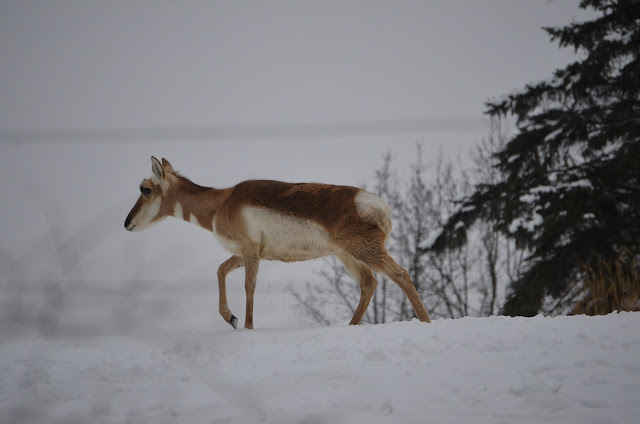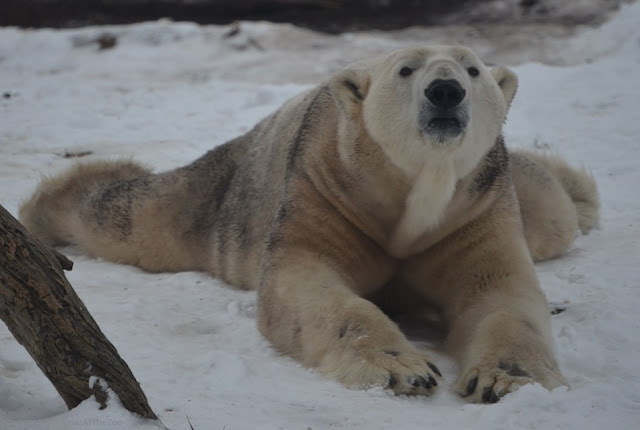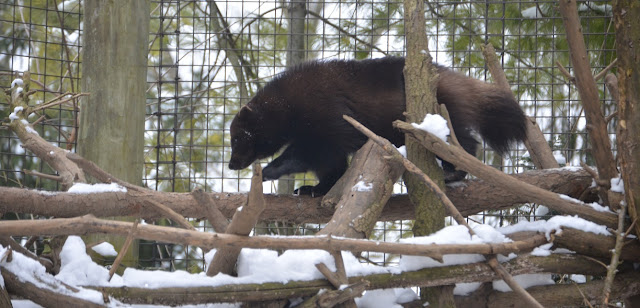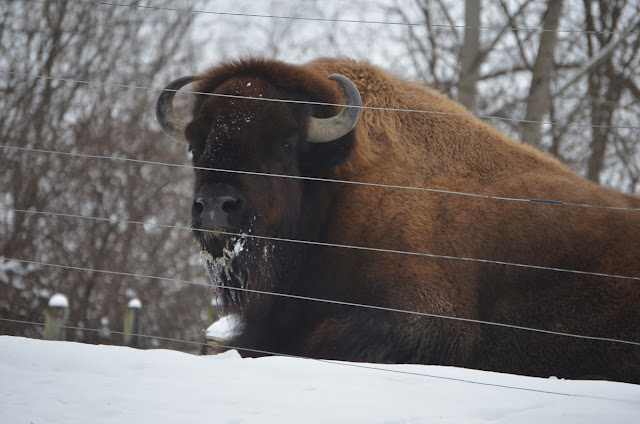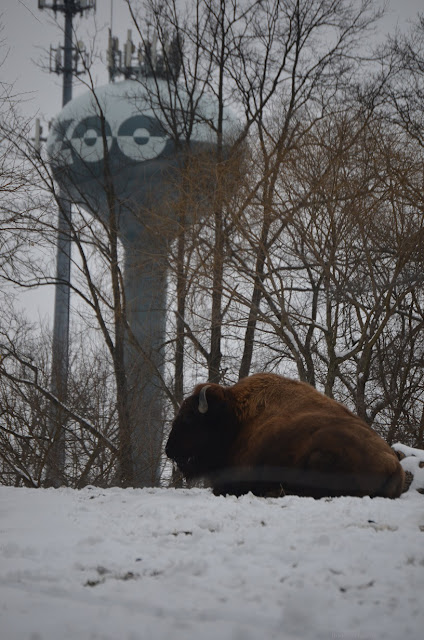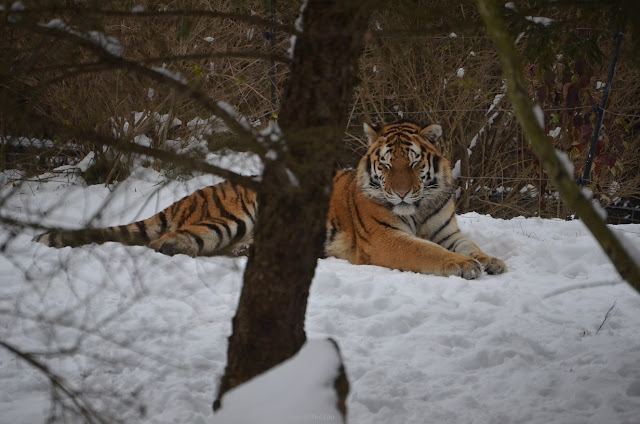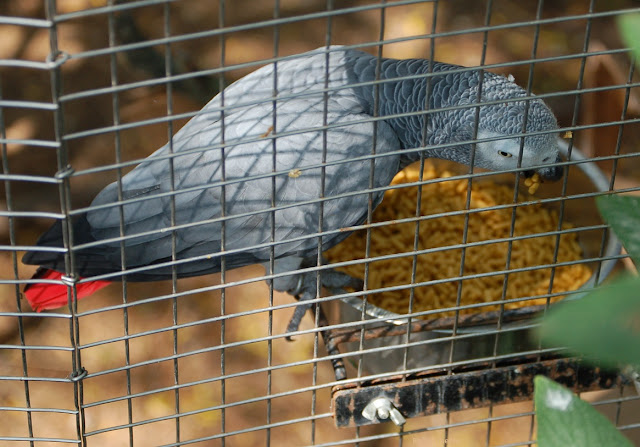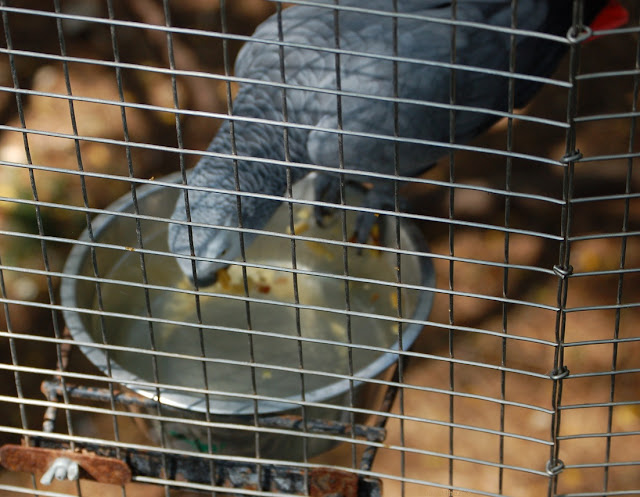I'm not happy with my photos of animals in the snow (previous post) because they look flat and dull. So, contrary to my conscience, I fired-up PaintShop Pro. I took the easy route and used the One Step Photo Fix feature. I thought that feature went too far, so I used Smart Photo Fix, which let me make some adjustments manually. Here's what I got for the tiger:
 |
| Amur tiger, with (bottom) and without digital enhancement |
I prefer the slightly-increased brightness of the enhanced tiger.
Do you see the dividing line in the wolverine photo? Interestingly, the Photo Fix features make dark areas darker in addition to brightening the scene overall.
 |
| Wolverine, with the left half enhanced |
I prefer the left half, I think.
On the other hand, I like the unenhanced pronghorn photo because it looks colder. Here's a poor pronghorn, trudging through the snow in search of food or shelter. Will it survive?! Of course it will. It's in a zoo, and there's a shed about 100 feet to the left. Also, it was about 34℉, not 9℉ as I write this.
 |
| pronghorn |
Have I changed my tune about enhancing photos in software? Not really, if only because it takes a lot of time. I'd rather spend time continuing to learn how to use my camera than learning how to use PaintShop Pro. I could push the One Step Photo Fix button for every photo, but where's the creativity in that?
My understanding of a camera's auto-exposure function is that shooting a snowy scene often yields a picture that is underexposed (too dark) because the camera adjusts for the brightness of the snow to the detriment of the relative darkness of the subject. Reading and backyard experiments tell me I can use my camera's exposure compensation button to get brighter subjects right from the camera. This is a good, small step away from my using auto-everything and toward taking control of the camera.






